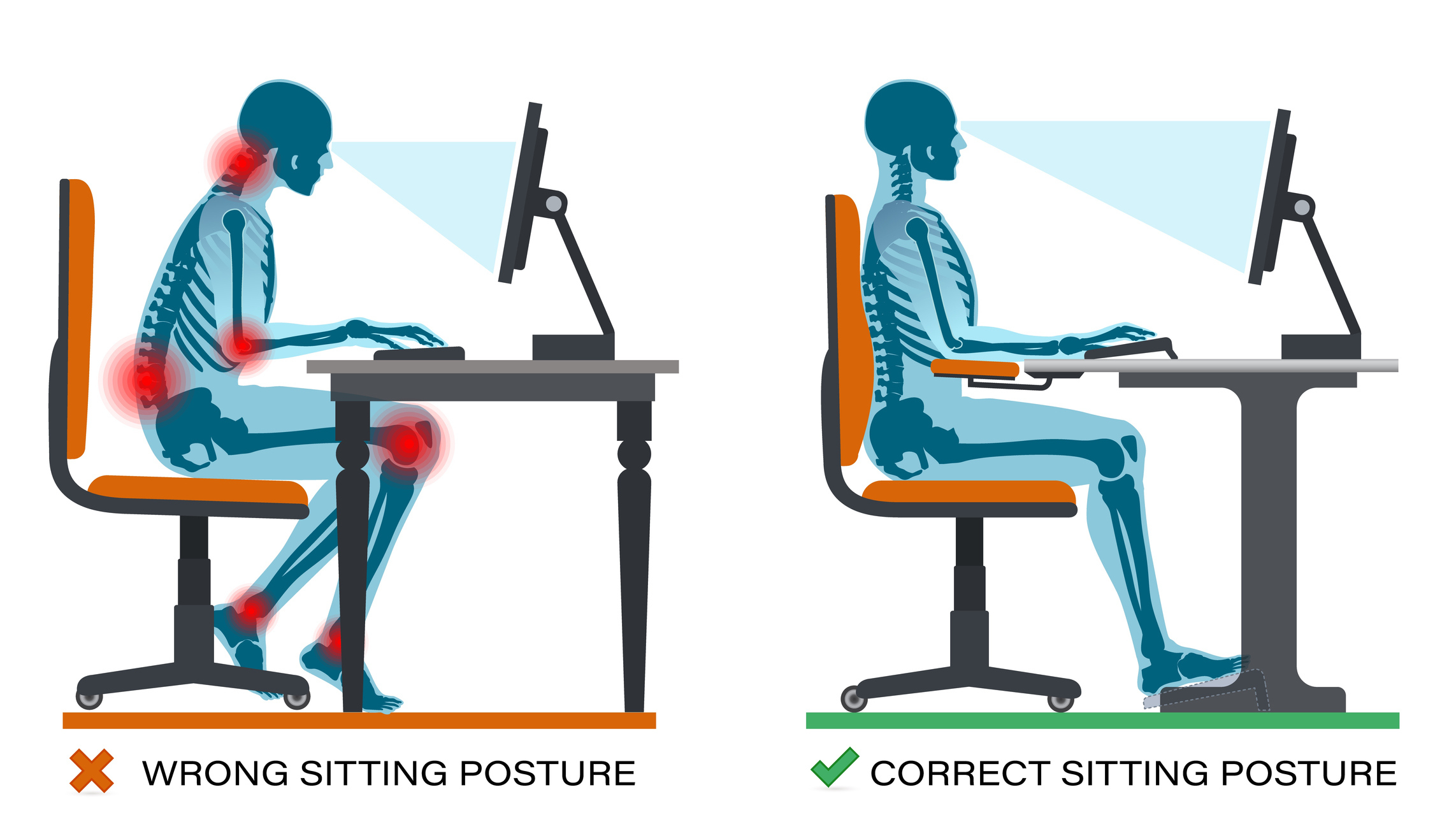
Wellness@Work: How to Build Better Posture at Your Desk
You can counteract the time spent sitting at your desk, on your commute and even your downtime in front of the TV in three simple ways.

Is sitting really as bad as smoking? Though they aren’t exactly the same, the fact is both can be bad for your health. Prolonged sitting isn’t good for your back, your neck or your health, but that doesn’t mean you’re doomed if you’ve got a desk job.
The most important thing any of us can do is move. Over the years, different yoga trainers of mine have shared profound reminders like: “Movement is medicine,” “motion is lotion,” and “rest is rust.” We understand that exercise is effective in terms of building strength, improving balance and flexibility, and more. But is sitting that bad?
Being too sedentary slows down metabolism and reduces the body’s ability to process fats. That leads to significantly increased risks for diabetes, cardiovascular events like heart attack and stroke, blood clots, and obesity. Some studies even link prolonged sitting to greater risks for certain cancers, Alzheimer’s disease and dementia, and anxiety and depression.
The good news is that you can counteract the time spent sitting at your desk, on your commute and even your downtime in front of the TV in three simple ways.
Get moving!
Set a reminder on your phone to get up and do some simple stretches. Walk to a co-worker’s office instead of sending an email. Choose that parking space that’s a little farther away. Your body will thank you for the extra time you spend on your feet and getting your heart pumping.
Work out every day.
Spend some time walking during lunch, or hit the gym or the rec center, take an online class, or join a yoga studio or other group fitness if you need the motivation and accountability. Finding a way to work out is more convenient than ever, and even just 15 minutes of exercise can be effective.
Watch how you sit.
For some, there’s no getting around sitting at a desk, but there are ways to build better posture. In the graphic, the feet are flat, elbows supported and spine stacked. It’s helpful (and safer for your body) to develop awareness of neutral spine, which is fundamental to movement practices like yoga and Pilates.
How to find neutral spine
Place your thumbs at the bottom of your ribs and the index fingers at the top of the hips. Alternately arch and round your spine so you increase and decrease the space between the ribs and hips until you find the position where they stack. Lift the ribs slightly off the hips to lengthen your spine. Draw your low belly in to help keep your core engaged. Notice that the shoulders are not rounding forward and your chin is parallel to the floor. All of this helps keep your bones aligned and your circulation flowing.
Another visual that may help is to think of your spine or your body as a stack of bowls. The bowl of the pelvis positions the hips (without arching or rounding the low back). The bottom of the ribs is the rim of that bowl; then the top of the ribs, the shoulders and the chin stack evenly.
About the author: Michelle Ryan, an E-RYT 200 yoga instructor, works as a marketing specialist for USA Health.
How can you lead a longer, better life? Follow weekly Wellness@Work tips from USA Health Integrative Health and Wellness. We cover ways you can eat better, move better, be more mindful, and find more balance to support your optimal health and well-being. Learn more at the USA Health Wellness blog.



